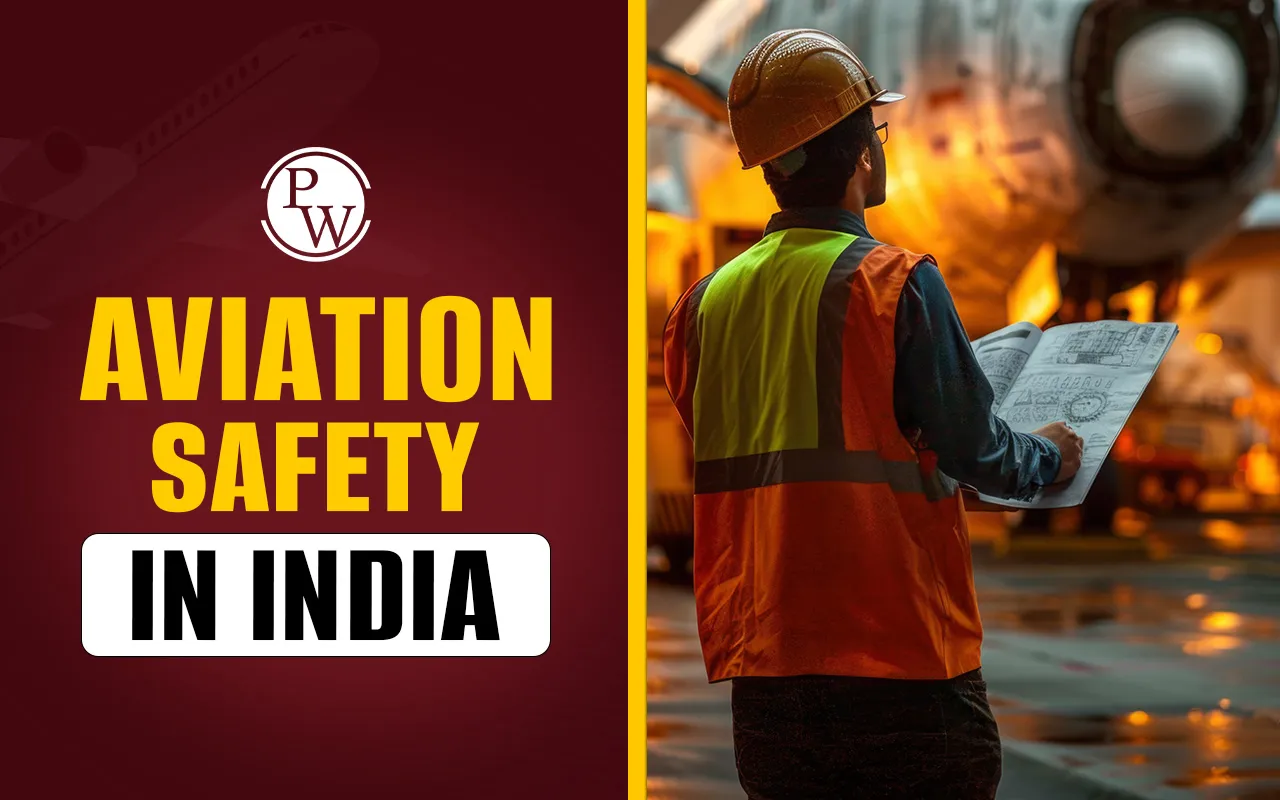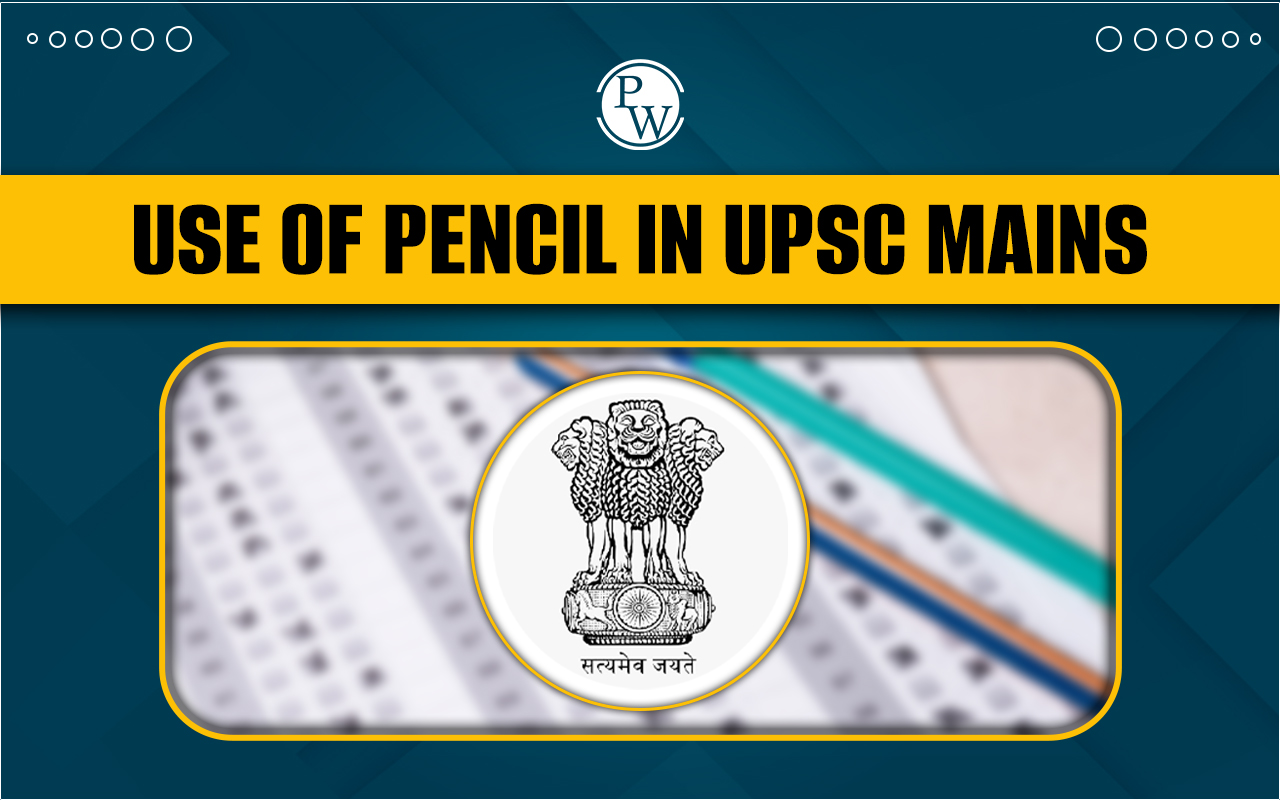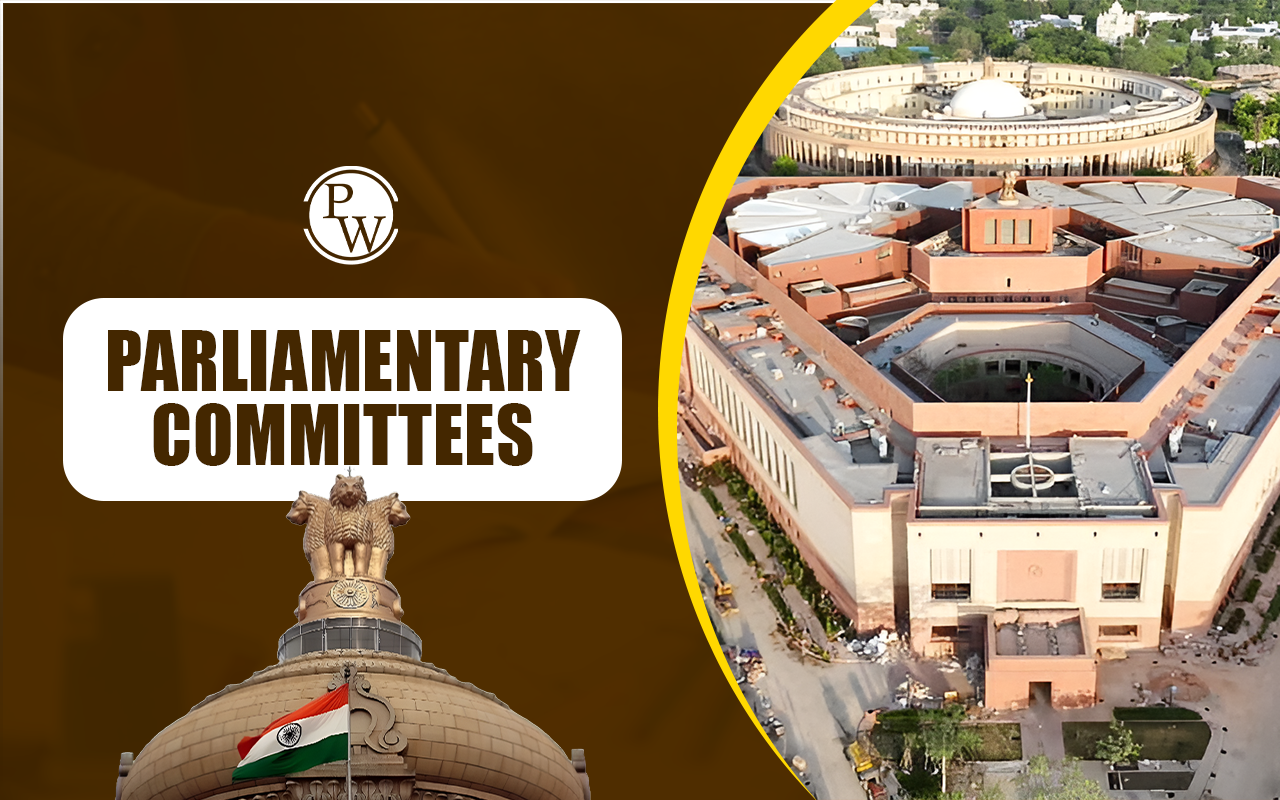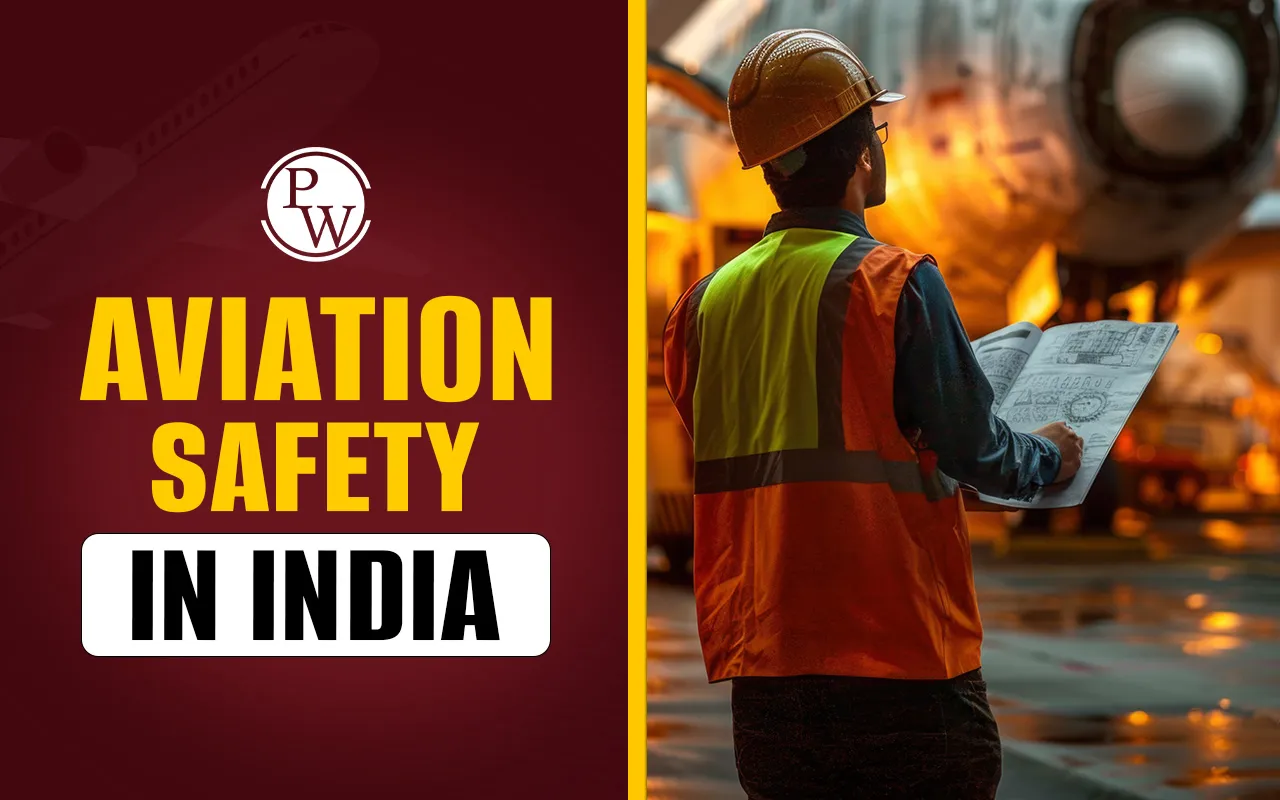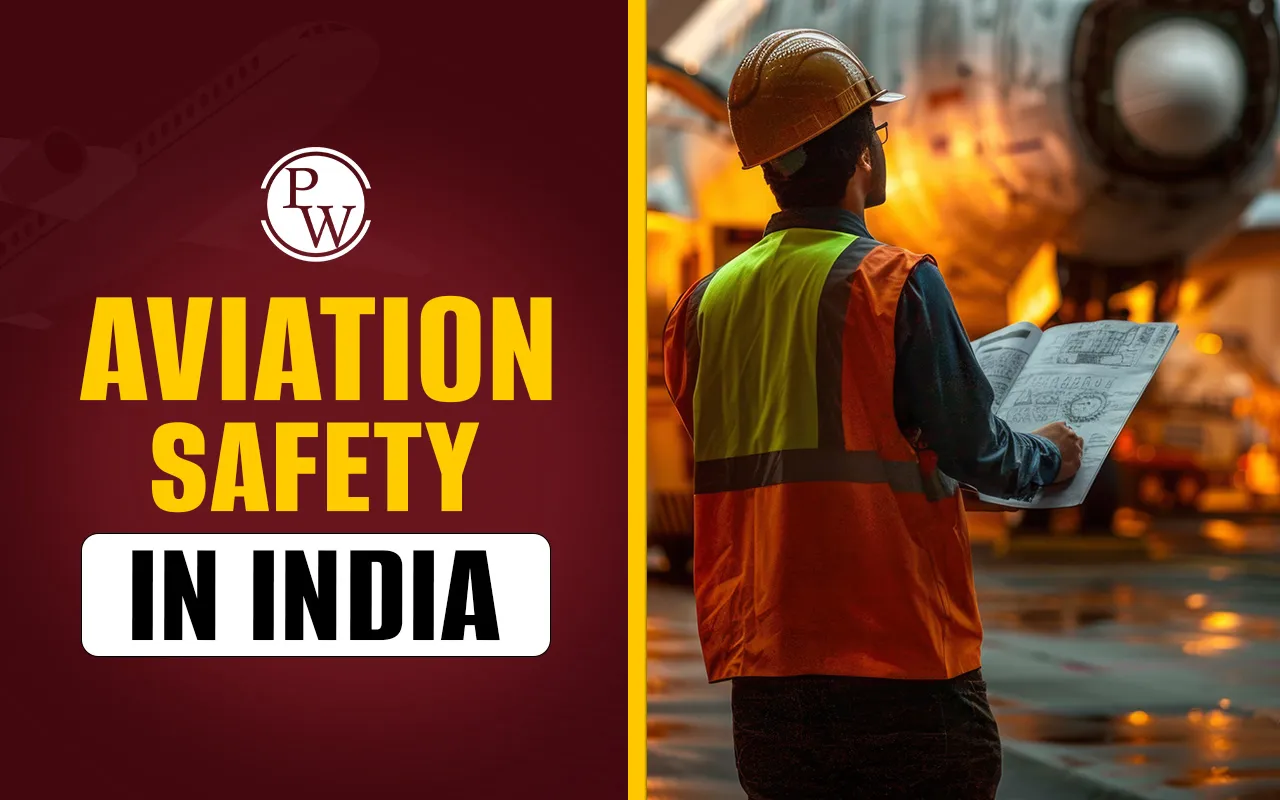
Aviation safety in India: India’s aviation sector is growing fast, but recent accidents have put the spotlight back on safety and regulation. One of the most serious was the Air India crash near Ahmedabad on June 12, 2025, involving a Boeing 787 with 242 people on board. The tragedy has raised serious questions about the effectiveness of aviation safety in India. Read on to learn about key challenges and the current status of aviation safety in India.
Aviation Safety in India
India is the third-largest aviation market in the world. In Financial Year 2023-24, it handled over 341 million passengers and 3.4 million metric tons of air cargo. Therefore, safety in the skies is not just a choice but a necessity. Aviation safety in India focuses on preventing accidents and protecting passengers, crew, and aircraft.
It covers everything from aircraft maintenance and pilot training to air traffic control and airport operations. Several aviation incidents in the past have drawn attention to safety issues. However, the country has made consistent efforts to follow international safety norms. India is a signatory to the Chicago Convention and complies with the standards set by the International Civil Aviation Organization (ICAO).
Common Safety Challenges in Indian Aviation
Since independence, India has faced over 50 major air disasters, caused by a range of factors including pilot error, technical failures, security lapses, and difficult airport terrains. Despite improvements, Indian aviation still faces several safety challenges. These include:
-
Infrastructure Issues: Many smaller airports lack modern equipment and safety features (e.g., Mangalore, Kozhikode). Around 50% of accidents occur during landing or takeoff phases (IATA 2023 Safety Report).
-
Air Traffic Congestion: Busy airports like Delhi and Mumbai face heavy traffic, increasing the risk of incidents.
-
Maintenance Lapses: Aircraft maintenance can sometimes be rushed due to high demand.
-
Skill Gaps: There is a shortage of skilled air traffic controllers, technicians, and safety inspectors.
-
Weather-Related Risks: Fog, storms, and monsoons often lead to delays and emergency landings.
-
Bird Strikes: Poor waste management near airports increases the risk of birds hitting aircraft (case of US Airways Flight 1549 in 2009).
-
Human Error: Pilot error has been a factor in several crashes, such as the Charkhi Dadri mid-air collision and runway excursions.
-
Reactive Approach: Tendency toward reactive rather than proactive safety management, with lessons often learned only after major incidents.
These challenges need ongoing monitoring and regular upgrades in technology, training, and infrastructure.
India’s Air Safety Law
India’s air safety laws are governed by a comprehensive regulatory framework aimed at aligning with global standards. Primary legislation and regulatory bodies include:
Aircraft Act (1934) and Aircraft Rules (1937)
These form the bedrock of India’s aviation regulations, covering airworthiness, safety protocols, and operational standards. Recent amendments include the Aircraft (Security) Amendment Rules 2024, which enhance anti-terrorism measures and cybersecurity protocols.
Directorate General of Civil Aviation (DGCA)
The primary regulatory authority is responsible for enforcing safety standards, pilot licensing, and accident investigations. It operates under the Ministry of Civil Aviation. The main role of DGCA is to ensure that Indian aviation adheres to safety standards. Its duties include:
-
Certifying aircraft and airline operators
-
Licensing pilots, engineers, and air traffic controllers
-
Conducting safety audits and surveillance
-
Investigating air accidents and incidents
-
Monitoring flight data and issuing safety alerts
-
Coordinating with ICAO and other global regulators
In 2024, the DGCA introduced updated Flight Duty Time Limitations (FDTL) to combat pilot fatigue, extending weekly rest periods to 48 hours and redefining night duty windows. Overall, works to improve the safety culture within airlines and airport authorities.
National Aviation Safety Plan (NASP) 2024–2028
In recent years, India has made significant progress in improving its aviation safety oversight. In December 2022, India’s aviation safety oversight was ranked 48th globally, a substantial improvement from its 102nd position in 2018.
To further improve aviation safety in India, the government has introduced the National Aviation Safety Plan (NASP) 2024–2028, aligned with ICAO’s Global Aviation Safety Plan. Key objectives include:
-
Continuous reduction of operational safety risks
-
90% effective implementation of safety protocols by 2028
-
Strengthening safety oversight capabilities
-
Effective implementation of the State Safety Programme
-
International collaboration and information sharing
Air India Safety Management System
Apart from government oversight, airlines also have their own internal safety systems. Air India, for example, operates its own Safety Management System (SMS) to promote safe operations.
This system includes:
| Feature | Details |
| Core Platform | Ideagen Coruson (cloud-based) |
| Real-Time Reporting | Automated, immediate incident and risk reporting |
| Data Accessibility | Available across organization, including on crew iPads |
| Compliance | Aligned with DGCA, NASP 2024–2028, and ICAO Annex 19 standards |
| Risk Focus | Maintenance, in-flight operations, crew checks, and high-risk scenarios |
| Continuous Improvement | Data-driven monitoring, regular audits, and integration of investigation outcomes |
Air India’s Safety Management System is built on real-time, data-driven processes, global best practices, and a strong commitment to continuous improvement. Therefore, such incidents are extremely rare and require thorough investigation and review.
Way Forward
India’s aviation safety record has improved over the years, but there is still significant room for progress. To take the next step forward, the country needs to invest in better training for safety professionals, upgrade airport infrastructure, particularly in Tier-2 cities, and enhance coordination between the DGCA, airlines, and airport operators.
Strengthening enforcement mechanisms and penalties for non-compliance is equally important. Above all, promoting a safety-first culture across every level of the aviation ecosystem is key. A stronger, more transparent safety framework will not only strengthen aviation safety in India but also improve its reputation on the global aviation stage.
Explore PW UPSC Courses to learn more about aviation, governance, and safety initiatives for competitive exams!
Aviation Safety in India FAQs
What are the main laws governing aviation safety in India?
What is the role of DGCA in Indian aviation?
How does Air India ensure passenger safety?
What challenges does India face in aviation safety?
What are some recent safety reforms in Indian aviation?

UPSC Coaching
